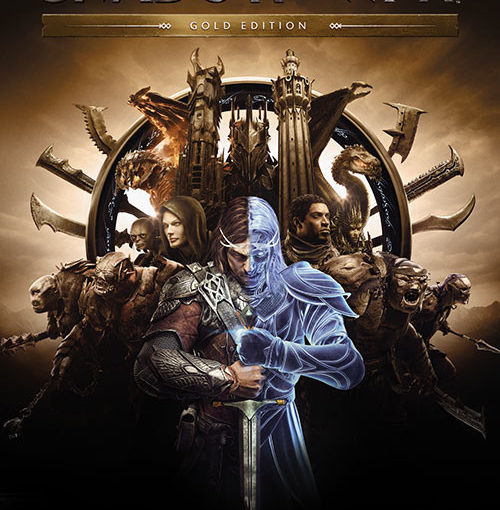As someone who prides himself for being a decent game critic while being a below-average gamer, I cherish opportunities which allow me to go against the current of critical opinion. Sadly, such opportunities don’t arise too often. One reason for this is that my gaming lineup is somewhat conservative, consisting heavily of games that have a proud lineage or at least something to recommend themselves. More often than not, I play these games knowing they’re decent, if not outright good. And I generally agree in the end. The sole exception to this was Remember Me, where I found almost every angle of criticism (save the button mashing) to be unduly harsh and unjust. Not so with the third iteration of the Tomb Raider reboot series though. Shadow of the Tomb Raider is a game that has its flaws, and I understand that these are flaws and not some weirdly artistic nuances. Yet I also understand that where it fails in terms of repetitive story, it scores in terms of the variations introduced; where it stumbles for lack of new things to do, it rises above its predecessor in terms of the depth of side quests involved. I could go on, and I will, but to do some justice to the game’s devs, let’s start with the more positive aspects.
Graphics
If there’s one department where Shadow of the Tomb Raider shines, it is in the graphics department. No one expected Square Enix to be squeamish in this department, especially since SoTR is supposed to be getting cutting-edge CGI grade ray tracing compatibility. Yet even with my now aging GTX 960, I managed to unlock some of the graphics potential of this game. Running at Highest settings at 1080p eventually proved too much of a chore for my rig, but while I did, the results were breathtaking.
First off the bat, the scenery is mesmerizing. The dark cave walls, the patchwork of light and shade in caverns, the deep sunken temples and the bustling markets all appear as veritable works of art. Yet this game was marketed as a jungle survival game, and the jungle truly comes to life. Despite not being an open-world game, the jungle seems expansive enough to let you explore without risking straying too far away from the primary objectives. All the while, you’re constantly admiring the rich foliage, the great diversity of wildlife and – again – the interplay of light and shade on the grass, the trees, the distant peaks, the rocks, the water, the…..
Okay, let’s just say I felt deeply immersed in the forest. Move out of the forest though, and you get deep caves and sunken temples, usually having challenge tombs. Here, the lighting is just about right for you to be on the lookout for traps. Moving into large chambers changes the ambiance subtly, giving you the idea that you now have to solve some puzzle, or take down some enemies. All this while, the rock faces, the totems, the spikes and the skeletons appear eerily real. They’re places you can stay in and admire the artwork, but which really make you feel you should get going. The graphics are really that good.
Underwater levels deserve a special mention. There aren’t any wholly underwater levels, but Lara gets her ponytail wet often enough. These underwater levels can be clear and pretty like the cenote you visit about midway through the game, or the dark brackish water that you navigate as you move in or out of some challenge tombs. Either way, the game manages to keep you focused on the objective while allowing you to admire the graphics involved.
Speaking of ponytails, Lara’s hair remains what it was in the last game – uncannily similar to an actual horse’s tail. Despite the advances made to the other graphical aspects, almost no improvement can be found in this specific department. As any long-haired girl will tell you, ponytails stand somewhere between masses of tied seaweed and a bunch of loose threads. While games like Life is Strange lean heavily towards the former, SoTR goes in the opposite direction. You can make out individual hair strands, but they seem to have been woven artificially onto her head. The natural “bounce” and “volume” of hair still can’t be found in the game. This isn’t a negative since other games typically tie female hair up so tightly that there’s hardly any movement. But given how much detail the original reboot gave to Lara’s hair, this lack of improvement is disappointing.
Now a word about the populated areas. SoTR shines in areas with minimal human presence, where you are acutely aware of your surroundings and can take in the scenic beauty to the greatest possible extent. This isn’t possible in the populated areas. For one, the two populated areas in the game – Kuwaq Yaku and Paititi – are hardly paragons of architectural achievement. One is a ramshackle backwater of Peru, while the other is basically a village with some Mayan architecture thrown in. Either way, while the cities are pretty, there’s nothing awe-inspiring about them the way Alexandria is in Assassins’ Creed Origins.
Lastly, I should mention the facial expressions, since these have been vastly improved. The main cutscenes are specifically recorded with actors, so the facial expressions are supposed to be realistic. However, even the side mission cutscenes and the general facial expressions of NPCs and Lara herself, are commendable.
Overall, graphics is this game’s strong suite. It was expected to be, and it delivers well.
Score – 4.5/5
Plot – The plot has been heavily criticized, so let’s go over the basics first before I dive into by arguments. Lara is in search of a knife and a box, which together would allow someone to take on the power of a god and reshape the world. How this reshaping would be done is entirely unclear. The point is that a guy called Dominguez is after them, and Dominguez belongs to the uber-evil secret organization Trinity.
Hot on their trail, you reach Mexico, where you find the knife. But you get captured and lose the knife. You learn that the knife and box must be used together, otherwise there would be floods, storms, hurricanes, etc. etc. You then head to Peru based on some clues on the carvings around the knife pedestal. On your way there – and Tomb Raider fans will probably see this coming from a mile away – you crash and your friend and pilot get separated. After some animal killing and tool construction, you reach Kuwaq Yaku. Despite the name, it is a modern town with people speaking Spanish and cursing the oil companies that went belly up.
From here on, you can truly spread out your gameplay. If we strictly stick to the plot, we are told of temples where specific symbols are found, which match the clues obtained up to this point. Team up with a pretty tomboy called Abigail (Abby) to find these places. Once you do, a series of levers and climbing levels deposit you in the second – and definitely more interesting hub – the Hidden City of Paititi.
Apparently, Paititi is a surviving outpost of ancient Mayan culture. Your job is to solve the power struggle between the Cult of Kukulkan (who are also Trinity for reasons not entirely clear) and the rightful claim of Queen Unuratu and her son Etzli. Dominguez turns out to be Amaru, a son of Paititi who has a specific plan for the box and knife in order to remake the world to make Paititi a safer place to…..you get the drift. You head off in search of the box even as Unuratu is captured trying to rescue her son from the clan. The box, as it turns out, had been removed from its rightful protection of the strange race of Yaxiil centuries ago by an increasingly deranged Jesuit monk named Lopez.
Foreshocks of the upcoming earthquake force you to flee from hordes of Yaxiil. You return to free Unuratu, only to see her get bumped off with a shotgun. You now head back to Kuwaq Yaku for reasons not entirely clear. On the way, you are attacked by Trinity forces, and have to endure a gruelling stealth section before letting it all out with some much-welcome assault rifle fire in the final stages. Your target, the Trinity military commander Rourke, gets away.
Instead of chasing him, you head to the Church of San Juan, looking for a crypt which would hold Lopez’s stolen box. As you learn about the madness overtaking the man through the writings of his companion T Serrano, you discover an elaborate and ghoulish chapel. More lever pulling later, you find the box. You naturally take the box, and for plot purposes, promptly hand it over to Dominguez.
Again for plot purposes, your friend Jonah takes it and makes a run for it. Again (again) for plot purposes, he’s thrown off the helicopter and now Dominguez has both the box and knife. You’re left wondering whether you might as well have taken up the Trinity job contract in Dominguez’s place and have had to do less rock climbing to get those relics to Trinity.
Fast forward to the final section, where you decide to ambush the Kukulkan men (and the modern Trinity men, who don’t seem to be cooperating much for some reason) and find the Yaxiil to be your allies. Clambering along walls to the accompaniment of hordes of these creatures (“they’re more than creatures” – Late Unuratu of Paititi) you finally reach Dominguez/Amaru, who has now absorbed the power of Kukulkan and become something of a god. Defeat him and you end up becoming the Kukulkan. The queen of the Yaxiil “kills” the god to abort the upcoming apocalypse, in a cutscene so generic that you almost know Lara would survive this “killing”. You end up back at the Croft estate, and the world is presumably safe.
Generally, I don’t recount the whole story in such detail. The reason I did is to draw out some points from it. First off, it has to be admitted that the storyline isn’t exactly fresh. This is the second game to have the three major categories – high-tech bad guys (Trinity), the old-timer bad guys (undead, in this case Yaxiil) and the lost civilization goods guys (Mayan Paititians) – of characters, and it feels a bit stale.
Granted that the game changes their roles somewhat, but in doing so, creates a confusing distinction between the modern Trinity mercs and the cult of Kukulkan. It is implied that Trinity either founded it or took over an existing cult, but how they coordinate with the modern-day baddies is not clear. Even when Rourke shoots Unuratu with a shotgun, the next section involves fighting sword and bow wielding enemies. Are these native Paitians who ally with Trinity and Kukulkan. Are they modern people of Trinity who just maintain a façade and didn’t have time to pick up modern weapons before attacking you ? The game leaves this maddeningly vague.
Another problem is the story progression. The writers could have done better than have Lara give up both pieces one after another. If both pieces needed to be with Trinity to create the epic showdown in the end, this could have been handled better than through two hostage situations. The second could have been entirely avoided if Lara had somehow changed the frequencies on which they communicated after Rourke found out when he came across Jonah’s walkie-talkie. Maybe she did, but the game says practically nothing about it. If she didn’t though, it would explain how Trinity turned up at the Church soon after the two started exploring it. (Also, mobile connectivity guys ? It’s 2018).
These big loopholes are coupled with many smaller ones. For one, Lara manages to fool all the guards of Kukulkan even when it becomes very clear that all the guards of the cult are male and Lara doesn’t even have a female Paiitian voice. That British accent, and horse-tail, would have been dead giveaways even if she left weapons at home. Secondly, the whole Maya theory is rather poorly explained. I never could figure out what the essential procedural difference was between Lara’s plan to restore the sun and Dominguez’s plan to take the power of the sun through Kukulkan. Thirdly, the game’s final section involves too many actors without actually, well, involving them. It says the rebels would be involved, but there’s no trace of them. It says the “High Council” of Trinity are personally there, but we soon hear they have been slaughtered. It’d have been better if this section was broken into a number of different missions, with each mission bringing out more about the City of the Serpent.
All these complaints aside, the story isn’t a damp squib. It kept me interested enough to finish the game during a rather busy week. The story is briskly told, with no unnecessary detours bar the ones you willingly take. There are enough variations in the roles of the Paitians and the Yaxiil to force you to appraise their roles and good and evil. In fact, turning the Yaxiil into allies in the last section is a masterstroke of storytelling, providing more depth than anything involving the Japanese or Byzantine forces. Lastly, while the plot logic is somewhat convoluted, the game doesn’t require you to scratch your head too much about it as long as you keep your eyes on the actual target – Dominguez.
So all in all, the plot could have been better. But in terms of variety, length and level of interest induced, I’d say it scores a solid four out of five. It may not be as great a jump as from the first to the second, but it possesses vitality nonetheless.
Rating – 4/5
Gameplay – Another major complaint of gamers has been the gameplay. This isn’t so much about broken mechanics as about lack of new things to do. Again, I sympathize. Whereas the second iteration extended the list of things to do between missions substantially, this game doesn’t extent it so much.
For instance, whereas you could improve your Russian by studying murals and signs in the previous game, this time around you are also rewarded with the possibility of deciphering obelisks containing vital supplies, including rare skins. Many a times though, simply wandering into areas with suspiciously unique looking attributes nets you the loot anyway. For instance, I found the loot of the obelisk by the water drawbridge by noticing that there were snake skin sheddings around it.
The side quests are better. While some – including the lengthy one involving Etzli’s coronation – are indeed complex fetch, or fight and fetch, quests, others provide interesting stories. One in the Hidden City asks you to find out about the meaning of life from the outcasts to judge whether such a man has stolen the dice of a child. Another in Kuwaq Yaku tells the story of Abby’s mother and her desire to turn the girl into a Croft-like adventurer.
Through all of this, and the endless exploration of caves, rocks, etc., gameplay is surprisingly smooth. Excepting places where the game got hung due to my hardware limitations, there weren’t any areas where I could jump through walls, stand on people’s heads or otherwise do something the game normally wouldn’t allow. Doors that were closed remained closed until the time had come or one had the right tools and expertise. Doors and levels that were available remained so without causing unnecessary hiccups in terms of randomly spawned enemies and randomly closing puzzle options.
Movement is fluid, and stealth sections are an especial treat. Despite being a bit of a klutz and completing these, I found it to be immensely satisfying taking down enemies. Even if your cover is busted, you have the options of melee and shooting rapidly, allowing you to take down almost all enemies.
Which brings me to combat. Of the three categories of enemies you would have to fight, the modern day Trinity is perhaps the easiest. They appear early in the game, and have all the flaws that you knew they would have if you had played any of the older games. Even later, with armored and heat-vision Trinity enemies closing in on you, you know that you have the full array of weapons to use and a range of strategies to adopt. These include slinging them up from trees (like in AC III), stabbing them in the back with your climbing gear, or simply planting a bomb/arrow and causing it to explode when an enemy approaches. Given that they aren’t exactly the worst either in terms of ranged or melee attacks, you can experiment and still live to tell the tale.
The second group of enemies are the Cult. The cult can easily be distinguished using their black and green uniforms. Despite both being part of Trinity, these guys never bear guns. A letter in the main Hidden City temple tells you this is to maintain the façade of being priests and not modern mercenaries. So when you masquerade as them, you too are limited to just arrows. This is fine as long as they aren’t trying to all rush you head on. When you’re discovered and you’re being sniped, shot and slashed at all at once, the lack of more modern weapons becomes a serious impediment. Yet in most instances, these guys are involved in search operations and can be taken down one by one.
The toughest group though, are the Yaxiil. The game never makes it clear as to who they exactly are. Lara’s argument about them being monsters or creatures is rejected by Unuratu. By negative definition and the fact that the queen eventually allies with you, it may be assumed that they are not, in fact, undead. This is both a relief, and also a thing to pique your interest. Maybe it will be satisfied in DLC, because at this juncture it is impossible to tell what they actually are.
Whatever they are, their tendency to fire dangerous poison-tipped arrows and charge you head on makes them challenging enemies. You can use guns against them of course, but remember that they will not give you any ammo. In fact, matters go to hard that I had to count every bullet on some levels such as the Tree of Life Challenge Tomb. You can imagine my relief when they become allies for the last mission.
Regardless of the comparative difficulty, it may be said that the game does well in allowing you all the resources and tools you need to take them on. Despite playing in the middling Rite of Passage difficulty, I never had trouble finding ammo boxes and/or arrows scattered around. Enemies move quickly, and not very predictably. Neither are they bullet sponges though, and only a few rounds is enough to take down most.
Now a bit about crafting and skills. The devs have tried to add a number of skills, but sadly most of these were already present in the last game or aren’t entirely useful. For instance, the skill allowing one to shoot two enemies at once, was hardly useful since there were very few instances when enemies were looking at each other but no other enemies were looking at them. Thankfully, challenge tomb skills are much more useful, and make the gruelling tombs worth their while.
Unlike the previous game, we now have clear demarcation between challenge tombs and crypts. Crypts are smaller, and generally provide you with legacy outfits rather than skills. They also generally don’t contain enemies or special skills. Challenge tombs, on the other hand, can be anything from pirate ships to huge underground trees, alongside the more traditional actual tombs. Here, you will have to climb/swim/run/walk your way through a pretty straightforward route, until you reach a puzzle. Despite lowering the puzzle difficulty to the lowest, I could not – simply could not – solve some of them. One of them, the mirror challenge, took me over an hour to complete. The skill ? Definitely worth it.
Crafting is also much of the same old stuff. There is some variation in the rare animal skin department, but nothing like the custom missions we get in Far Cry. Resources are generally widely available, and coupled with your being able to snark anything and everything from shops without anyone batting an eyelid, this makes crafting pretty easy. The only time I could not craft something was when I required rare wolf skins. The only wolves I could easily access lived outside the San Juan perimeter, and unfortunately got killed both times I took on the rare black wolf. That aside, I could easily get rare condor feathers, jaguar skins, etc. without actually hunting the animals.
A last point about navigation. For a game that places so much importance on navigation, the game’s own pointers are often misplaced. In some cases, this adds to the challenge, forcing you to analyse an area very carefully to find the monolith riches or survival cache. In story missions though, this is very irritating since caves are badly marked and easy to miss. In side missions, NPCs you need to talk to would be found at the edge or outside the marked circle. Combined with the not-so-easy topography of the game and you are in for some intensive backtracking.
Lastly – and I swear this is the last last – there are some truly useless things. Conquistador chests, for instance, contain some precious goods, some gold, and a random relic. This improves your understanding of a random dialect, but beyond that and the goods, the chests may well have been ordinary pots.
Overall, gameplay is quick, smooth and has enough to keep one experimenting. Some features are repetitive, others unimaginative or disingenuous, but again, they aren’t game breakers for me.
Rating – 4/5
Characters – The reboot shows Lara as a vulnerable but mature young woman. Each of the previous games explored sides of Lara’s character and past. This one explores her relationship with her father. This relationship is pivotal, and the game does decent justice to it without forcing you into endless dialogue options. She continues to have great chemistry with Jonah, but it is increasingly implied that Jonah is falling for Abby. This is explicitly implied when in the conclusion, Etzli asks Jonah when they’re getting married.
Coming to Abby, she is a well-rounded character who deserved even more missions of her own. There could have been entire sections where we played as Abby. These could have been sections which noted the previous history of Kuwaq Yaku. The Forge, which is to an extent centered on her, doesn’t do enough justice to the mechanic tomboy descended from the Incas. Yet what we do learn tells us that she is a strong independent girl, not dissimilar to Lara herself.
Then we come to the Hidden City cast. Of them, Unuratu stands out for her excellent voice acting and powerful personality. As both a warrior and a mother, she embodies the spirit of protection that is inherent in her role as the queen. Having rebelled against the cult, she chose the hard life and eventually died for it, refusing every offer of collaboration with Trinity. She, of all the characters, comes closest to being truly inspirational, despite her having clear parallels to the leader of the people in the Rise of the Tomb Raider. In the end, you truly feel one with her mission to free Paititi, feel sorry for Etzli when she dies and feel respect for her when you take on her role in the final chapter of the game.
Etzli, on the other hand, unexpectedly shines. Being essentially a child, I didn’t expect him to be such a developed character. Yet instead of making childish jokes, he comes across as a character not unlike a younger Lara herself, making sense of a fast-changing world and performing his duties to the greatest extent of his understanding. He is cheerful and understanding, which make him a great candidate for a DLC set sometime in the future.
Before coming to the enemies, let’s ponder over the somewhat dubious position of the queen of the Yaxiil. “Queen” is something I made up, since it is nowhere implied that she is their queen. She seems to be some sort of leader, though, since they bow to her and obey her. “Her” is also something I deduced from her clothing, since that is also not implied anywhere. In fact, there is little talk of the Yaxiil at all, compared to Lara actively learning about the Japanese queen in the first iteration, and the Macedonian invasion in the second. This, combined with the completely incomprehensibility of their language and the extreme difficulty of fighting them, make their cooperation in the final segment that much more gratifying. Despite the game not taking it well (putting Yaxiil constantly in my line of fire), I found the Yaxiil to be the single-most interesting addition to the game despite there being so little about them. The queen, if she may at all be called that, comes across as an interesting figure, dedicated to her task of protecting the box (and the knife too ?) but vicious and simplistic in her understanding of her allies and enemies.
Coming to the enemies, we only have two named enemies – Rourke and Dominguez. Rourke is the typically baddie, commanding troops and eventually getting killed by the Yaxiil queen and her followers. Dominguez on the other hand, is more of a grey character. He comes across as a deluded man who wishes the best for his Paititi, and doesn’t really care much about what happens to Trinity. But his choices make him a villain, and he pays the final price for it. (It’s mentioned that he is an academic, rather than a fighter. This probably explains why, despite his god-like powers, the final boss fight isn’t that difficult).
Before wrapping up, a note on the languages. The Spanish speakers speak, well, like the Spanish do. One can imagine that there are plenty of people who speak Spanish fluently, even if the developers demanded they speak the Peruvian flavour. More interesting, and disappointing, is the Quechua dialect, which I think is what the Mayans of Paititi speak. This language is still spoken by millions, so it is both a testament to the survival of actual Mayan language and the dedication of the gamers that they could integrate actual Mayan conversations into a game created five centuries after the invasion of Pizarro. Yet the lines seem read out and forced, with a few notable exceptions. Perhaps it is difficult to find enough qualified Quechua voice artists, and it would definitely be difficult to get children to do the voice acting if they didn’t use it extensively. Despite this disappointment, the very fact that they went to the extent of getting all the Mayan lines actually voiced in the Mayan language is no mean feat.
Overall, the characters are warm and full of life. Along with the quintessentially focused Lara and funny sidekick Jonah, characters like Etzli, Abby and Unuratu feel relatable and likeable, even when their arguments don’t make the most sense. Taken with the storyline, one may argue that this is the best cast of characters but with a decidedly not-so-best storyline.
Rating – 4.5/5
Conclusion – While I understand where the hate for this game comes from, I honestly can’t share the same view. While some backtracking was truly tedious, I never felt the game going in a direction I didn’t want to go into. The graphics, the sound, the characters and even the story melded together in a way that left me coming back for more. Even when I second-guessed where the story was headed, I didn’t feel distanced. Instead, I looked for pleasant twists and found them aplently. Even when I knew the gameplay would be much of the same hiding, shooting and occasional melee, I looked forward to making use of the subtle differences introduced this time around. In other words, while I wasn’t truly stunned by any moment in the game, I was more than once thrown off my comfort zone by the sheer ambition, effort and execution that had gone into the game. The result may not be what gamers want – and they want some very specific things – but it’d be a capital shame if this sent this game, and the franchise, in the direction Remember Me went.
Overall Rating – 8.5/10 (Recommended)





































